Table of content
- Data Streaming 101
- Event-Driven Architecture
- What is Data Streaming?
- Key Aspects of Data Streaming
- Data Infrastructure and Data Management
- Data in Motion vs. Data at Rest Vs. Data in Use
- Data Flow Processing
- Streaming Workloads
- Data Streaming Technologies
- Data Streaming Use Cases and Applications
- Challenges when Implementing Real-time Streaming Capabilities
- Data Streaming–A Top Priority for Machine Learning Systems Design
- Krasamo’s Offerings
Data Streaming 101
For today’s enterprises undergoing digital transformation, leveraging data through artificial intelligence and machine learning has become mission-critical. However, the traditional techniques of batch data processing sometimes result in decision-making based on outdated and stale data models.
In a fast-changing business landscape, even seconds or minutes of data latency can lead to missed opportunities or misguided actions. This is where embracing real-time data streaming becomes pivotal.
Data streaming refers to the continuous and rapid flow of up-to-date data from customer interactions, digital transactions, connected IoT devices, or IT monitoring signals. Instead of storing the data at rest, data streaming platforms enable immediate analysis, pattern detection, and triggering downstream actions as events occur. When integrated with historical data context, companies can better detect anomalies in real-time, personalize recommendations instantaneously, and optimize operations based on live metrics. These capabilities are extremely valuable for training highly accurate AI and machine learning algorithms.
As business executives plan their digital transformation roadmaps, adopting an enterprise-grade and cloud-ready data streaming architecture should be a top priority. When leveraged effectively, it serves as a continuous data integration layer between data producers and consumers across the organization. This leads to smarter real-time decision-making, rapid innovation of digital products and services leveraging AI, and meaningful differentiation from competition still struggling with data latency and batch processes. With the right vision and strategy, data streaming can provide the foundation for becoming an insight-driven, intelligent enterprise.
This paper introduces data streaming concepts and business implications, integrating technical explanations to support these concepts.
Event-Driven Architecture
An Event-Driven Architecture (EDA) is a design approach where applications respond to events (state changes). In EDA, systems react to events in real-time, unlike traditional architectures where data is processed in batches.
EDA is characterized by components like publishers and subscribers, where publishers detect and transmit events, and subscribers respond to these events. This architecture is particularly effective for dynamic, loosely coupled systems like microservices and is beneficial for handling unpredictable events in various applications such as IoT and real-time analytics. EDA’s flexibility makes it suitable for modern, agile software environments.
An event-driven architecture facilitates on-the-edge data processing, delivering immediate insights. This approach ensures the ongoing processing of data immediately following specific event occurrences or data generation. By monitoring events, messages, or threshold breaches within real-time data streams, applications can promptly initiate downstream actions, leading to quicker and more automated decision-making.
Moving to an EDA is not just a technological change but also a significant shift in how an organization views and utilizes data. It requires careful planning, a willingness to experiment and learn, and a culture that embraces real-time data-driven decision-making.
The Kappa Architecture is a streamlined approach for processing streaming data, designed to handle real-time and batch processing using a single technology stack. Central to this architecture is a streaming model where data is initially stored in a messaging system and then processed by a stream processing engine for analytics, allowing immediate and historical data analysis. This architecture simplifies the processing pipeline compared to other methods, treating all data as a continuous stream and using the same tools for immediate and retrospective analysis.
What is Data Streaming?
Data streaming is a technology and method used to deliver data continuously over a network in a real-time, or near real-time, manner. This approach is particularly beneficial for handling large volumes of data generated continuously by various sources.
Data streaming enables organizations to react to new information almost instantly, which is crucial in scenarios where timely responses are critical, like financial trading, emergency response systems, or real-time user interaction analytics.
Key Aspects of Data Streaming
- Real-Time Processing: Unlike traditional batch processing, which handles data in chunks after storing it, data streaming processes data immediately as it is generated.
- Sources and Destinations: The sources of streaming data can be diverse, including sensors, logs, financial transactions, social media feeds, and more. The destination could be databases, applications, or real-time analytics systems.
- Continuous Flow: Data is sent in a continuous, sequential stream, allowing for ongoing analysis and processing.
- High Volume and Velocity: Streaming data is often characterized by its high velocity and volume, requiring systems that can quickly process and analyze large quantities of data promptly. ( A challenge)
- Frameworks and Tools: There are various tools and frameworks designed to handle data streaming, like Apache Kafka, Amazon Kinesis, and Apache Flink, which help manage, process, and analyze streaming data.
- Applications: Common applications include real-time analytics, monitoring systems, fraud detection in finance, live dashboards, and IoT device management.
Data Streaming Implementation Strategies
To integrate data streaming in business operations:
1. Assess Data Requirements: Identify the data sources and the data type needed for real-time processing.
2. Choose the Right Technology: Select appropriate data streaming platforms and tools based on volume, velocity, and variety.
3. Develop a Streaming Strategy: Define how data will be collected, processed, and used.
4. Implement Data Infrastructure: Set up necessary hardware and software infrastructure.
5. Test and Deploy: Pilot the streaming solution and scale up after successful testing.
Data Infrastructure and Data Management
A robust data infrastructure and management system is essential to implement data streaming solutions effectively. Effective data infrastructure management ensures that the streaming data is processed accurately, securely, and efficiently, enabling real-time insights and decision-making.
One of the most important goals of a data infrastructure is to allow the use of the same data streams for different use cases.
It’s a good practice for developers to experiment, build prototypes, and evaluate the feasibility of new value streams.
Removing delays from batch data movement and processing, data streaming is a catalyst to accelerate and connect real-time applications, creating more responsive and intelligent systems and boosting opportunities across the board.
Tech executives should evaluate their data infrastructure to ensure efficient data streaming. This involves addressing key challenges such as managing data volume, velocity, and variety. Important components to consider include:
- Scalable Data Storage: Capable of handling high volumes of streaming data efficiently.
- Real-time Processing Engines: Engines such as Apache Kafka or Apache Flink process and analyze data streams swiftly. It requires flexibility and versatility to handle a variety of data (structured, unstructured, semi-structured).
- Data Integration Tools: For seamless streaming data integration with existing databases and systems.
- High-Performance Computing Resources: To manage the velocity and volume of data streams.
- Robust Networking Infrastructure: Ensuring low-latency and high-throughput data transfer.
- Data Security and Compliance Measures: To protect data integrity and privacy.
- Monitoring and Management Tools: For continuous oversight and optimization of streaming processes.
Tech execs’ goals are decentralized data access and promoting streaming data reuse across functions. Typically, organizations obtain real-time capabilities in stages due to challenges presented by system complexity, lack of standards, talent scarcity, and testing difficulties.
Realizing the full potential of data streaming requires more than just the streaming engine. Enterprises need a complete platform with data integration, stream processing, security, governance, and developer tools.
Some of the most common roadblocks to progress revolve around the operational complexity in deploying, monitoring, and securing streaming infrastructure, especially when scaling across hybrid environments.
Organizational silos lead to fragmented systems, duplicate pipelines, and limited data reuse or governance—also, skill shortages in architecture planning, capacity sizing, and building streaming applications for analytics or transactions.
Data in Motion vs. Data at Rest Vs. Data in Use
Organizations must keep up with the data needs of modern applications across environments for asynchronicity, heterogeneous datasets, and high volume throughput. It’s important to understand the states of data and its characteristics to design the systems and data security controls.
- Data in Motion: Refers to data actively being generated, transferred, and processed in real-time. It’s dynamic and continuously updated. Crucial for real-time analytics and immediate decision-making. It enables businesses to respond quickly to market changes, customer interactions, and operational issues.
- Data at Rest: Involves data that is stored and not currently being processed. It represents a static data state, often in databases or storage systems. Important for historical analysis, reporting, compliance, and strategic planning. It provides a stable repository for deeper, longer-term data analysis.
- Data in Use: Data in use refers to data actively being processed or utilized by computer systems and applications. Unlike data at rest (stored data) or data in motion (data being transmitted), data in use is in the state where it’s being accessed and manipulated by software, typically in a system’s memory. This state is critical for understanding how data is handled in real-time operations and is particularly relevant in contexts such as data streaming, where immediate data processing and analysis are essential.
Data Flow Processing
Building scalable and reliable high-performance streaming pipelines requires asynchronous data architectures.
Asynchronous Data
Asynchronous data in real-time data streaming refers to the handling and processing of data streams independent of timing constraints without reliance on a synchronized or predictable timing sequence.
This approach is essential for real-time systems where data is continuously generated and needs immediate processing, accommodating unpredictable data flows without direct coordination between sending and receiving systems. It is characterized by:
- Loosely coupled data transmission by producers as soon as updates are available rather than at scheduled intervals.
- Decoupled consumption where receiving systems can intake and handle asynchronous streams at their own pace.
- Use in event-driven system architectures for propagating data changes in a timely manner.
- Enabling parallel scalability across data producers and consumers.
- Resilience to variable data volumes due to the lack of rigid inter-dependencies.
- Being a core enabler of modern data streaming architectures, which require real-time throughput and elasticity.
Traditional Batch Data Processing
Batch data processing refers to the scheduled movement and transformation of large data sets in discrete intervals through purpose-built batch workflow jobs. It is characterized by:
- Bulk ingestion of accumulated data snapshots typically extracted from transactional systems or databases.
- Rigid, pre-scheduled execution intervals (daily, weekly, etc.) driven by the batched input data availability.
- Independent, sequential execution of batch jobs with file-based storage intermediaries.
- Being governed and optimized around known job execution times and system utilization patterns.
- Lack of capability to handle or react to real-time, continuous streams of granular data changes.
- High latency from when new data is available to insights due to dependence on the next batch cycle.
While traditional batch processing provides robustness and reliability at scale for high volume, periodic workloads, it cannot fulfill the low-latency and continuous processing needs of modern real-time analytics use cases across businesses and industries.
Streaming Workloads
There are two main streaming workloads: streaming data pipelines for ETL and streaming applications for real-time analytics and actions. Together, they can solve many business challenges.
Streaming Data Pipelines:
- Used for moving and transforming real-time data from sources to destinations
- Focus on ETL (Extract, Transform, Load) of streaming data
- Leverage platforms like Apache Kafka, Amazon Kinesis, Google Pub/Sub
- Tasks involve real-time data integration, cleansing, aggregation
- Output is cleaned, and aggregated streaming data is ready for analysis
Examples:
- Streaming log data from servers, filtering and writing it to data lakes
- Getting user clickstream data, transforming it, and loading it into a data warehouse
Streaming Applications:
- Used for developing real-time analytics/applications on top of streaming data
- Focus on analyzing data streams and deriving insights as events occur
- Leverage stream processing frameworks like Apache Spark, Flink, Storm
- Tasks involve real-time metrics, monitoring, predictive models, recommendations
- Output is real-time analytics and actions
Examples:
- Computing real-time dashboards of website user activity
- Generating live anomaly alerts from application log streams
- Showing personalized recommendations to users based on their real-time activity
Streaming data pipelines primarily concentrate on data engineering aspects, often likened to ‘plumbing,’ whereas streaming applications are more concerned with analysis and the development of applications that utilize streaming data. In this ecosystem, streaming pipelines are responsible for feeding refined data into streaming applications.
Data Streaming Technologies
In selecting a data streaming technology, considerations include business requirements for latency, processing logic, data origin, volume, application interaction, processing topologies, and license fees, among other things. Each technology offers unique benefits tailored to different operational needs and objectives.
Apache Kafka is a popular solution, as it plays a crucial role in data streaming as a distributed streaming platform. It allows for high-throughput, fault-tolerant handling of real-time data feeds, making it ideal for building scalable and reliable data pipelines. Kafka is used for real-time analytics, enabling businesses to process and analyze streaming data on the fly.
It’s particularly effective for scenarios requiring rapid data processing from various sources like IoT sensors, logs, or transactions, supporting applications in event-driven architectures and microservices.
We will briefly overview some data streaming technologies and embed links to their sources to improve your understanding and discuss your data streaming options.
- Event Stream Processing (ESP) Platforms
ESP platforms process streaming data in real-time, handling high volumes with low latency. Lightweight versions offer similar capabilities but are optimized for smaller, edge-based systems, reducing data transmission overhead. Examples: Apache Kafka, Flink, Confluent.
- Stream Data Integration (SDI) Tools
SDI tools facilitate real-time data integration, often used for ELT (Extract, Load, Transform) or streaming ETL (Extract, Transform, Load) processes, managing continuous data flows for immediate analytics or operational use. Examples: Informatica, Talend
- Custom Applications on ESP Platforms
Custom applications are developed on ESP platforms when existing solutions don’t meet specific business needs, particularly for unique processing logic or real-time response requirements—leveraged in high-volume, low-latency scenarios.
- Open-Source ESP Platforms
Open-source ESPs are community-driven and freely available (e.g., Apache Kafka, Flink, Spark).
- Open-Core ESP Platforms
Open-core ESPs are commercial products built around open-source cores, often with added proprietary features. Examples: Cloudera (using Flink),
- Open-Source ESP (PaaS)
ESP PaaS offers ESP capabilities as a cloud service, simplifying operations by managing infrastructure and scaling needs. Examples: Google Cloud DataFlow, Amazon Kinesis (AWS)
- Cloud ESP (ESP PaaS)
Cloud-based ESP services provide scalability and flexibility, which is suitable for businesses lacking extensive infrastructure, offering cost-effective, elastic data streaming capabilities. Examples: Azure Stream Analytics, Confluent Cloud, Cloudera.
- Unified Real-Time Platforms
These platforms combine features of ESPs with additional capabilities like DBMS and application engines, supporting both data in motion and at rest, ideal for complex applications needing immediate data processing and long-term storage. Examples: Materialize, Hazelcast.
- ABI Platforms
ABI (Analytics and Business Intelligence) platforms are integrated with ESPs to enhance real-time data processing capabilities, supporting advanced analytics on streaming data. Examples: Microsoft Power BI with Azure Stream Analytics
- Database Management Systems (DBMSs)
High-performance DBMSs support streaming data (data in motion) and traditional stored data (data at rest), often used for high-volume, low-latency applications. Example: MongoDB.
Data Streaming Use Cases and Applications
There are many real-world scenarios where data streaming is pivotal. It impacts on operational efficiency and decision-making. The following are just a few of our favorite data streaming use cases:
Inventory Logistics:
- Data streaming optimizes inventory management by providing real-time insights into stock levels, enabling quick replenishment decisions and minimizing overstock or stockouts.
Fleet Management:
- Streaming data from vehicle sensors helps in real-time tracking, fuel efficiency optimization, and predictive maintenance, enhancing fleet operational efficiency and safety.
Geofencing:
- Utilizes real-time location data to trigger alerts or actions when a device enters or exits a geographical boundary, crucial for security, marketing, and resource management.
Challenges when Implementing Real-time Streaming Capabilities
1. Complex distributed systems – Building a fault-tolerant distributed architecture that can handle very large data volumes with low latency requires expertise in systems design.
2. Data ordering guarantees – Streaming systems must handle out-of-order event data and provide correct results. This requires complex stream processing logic.
3. Varying event frequency – Real-world event streams tend to be very bursty, which needs to be handled without data loss.
4. Guaranteed delivery – Some applications need guaranteed exactly-once event processing and bindings to outputs, which is hard with parallel consumers.
5. Lack of standards – Streaming platforms and capabilities rapidly evolve, with a mix of standards and custom logic. Best practices are still being formulated.
6. Testing and monitoring – Validating expected business logic and SLAs in streaming systems requires significant investment into test cases and instrumentation for monitoring.
7. Talent scarcity – Few developers are experienced with building large-scale, mission-critical streaming systems compared to traditional data engineering.
Data Streaming–A Top Priority for Machine Learning Systems Design
Organizations progressively implementing data streaming across their business areas are getting positive business outcomes.
Tech leaders can continue using batch-based processing while migrating to real-time data streaming.
Real-time streaming capabilities provide huge business value that requires companies to budget adequate time, resources, and expertise when implementing and expanding streaming architectures.
Organizations must make decisions when implementing data streaming solutions. You can develop in-house capabilities and build your platform or acquire pre-built platforms, self-manage those platforms, or use a fully managed streaming platform.
Self-managed platforms require internal resources for operation and maintenance, while managed services offload these tasks to external providers, offering ease of use and scalability. The choice depends on technical expertise, budget, and specific business needs.
Fewer developers are experienced with building large-scale, mission-critical streaming systems than in traditional data engineering.
Thanks to the explosive amounts of data generated, cloud computing capabilities, and possibilities to implement machine learning and artificial intelligence, we are experiencing great momentum for data streaming adoption.
Call our Data Engineers to Leverage Data Streaming
Krasamo’s Offerings
As an integrator, we guide customers across their data streaming journey – from early experiments to enterprise-wide adoption. Our services include:
- Assessing use cases, expected returns, and readiness for streaming initiatives.
- Evaluate the complexity and costs of data streaming solutions in your organization.
- Modernize messaging workloads.
- Building proofs of concept, data models, and streaming applications tailored to the company’s needs.
- Develop a custom streaming application and data logic on an ESP platform.
- Implementing fully managed platforms like Confluent leveraging cloud benefits.
- Ingesting, processing, storing, and operationalizing real-time data streams.
- Ensuring security, governance, and compliance needs are addressed.
- Delivering strategic roadmaps for incremental data streaming maturity.
- Build a cloud-first architecture and a modern data stack to streamline operations.






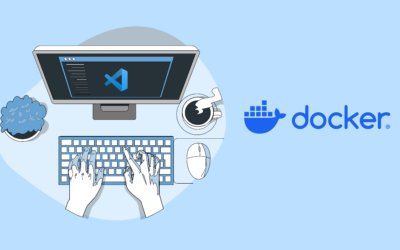
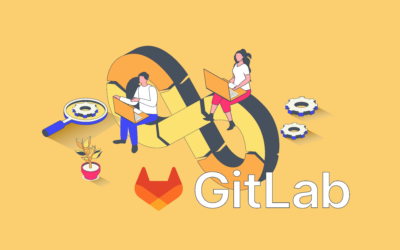

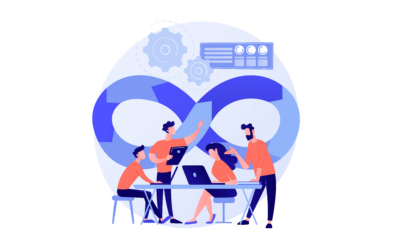
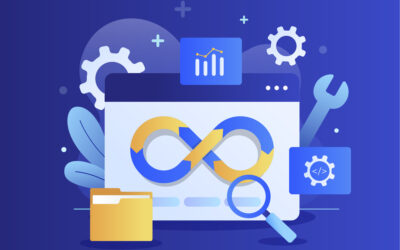
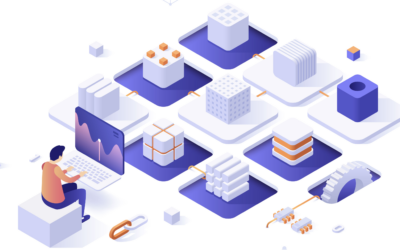
0 Comments